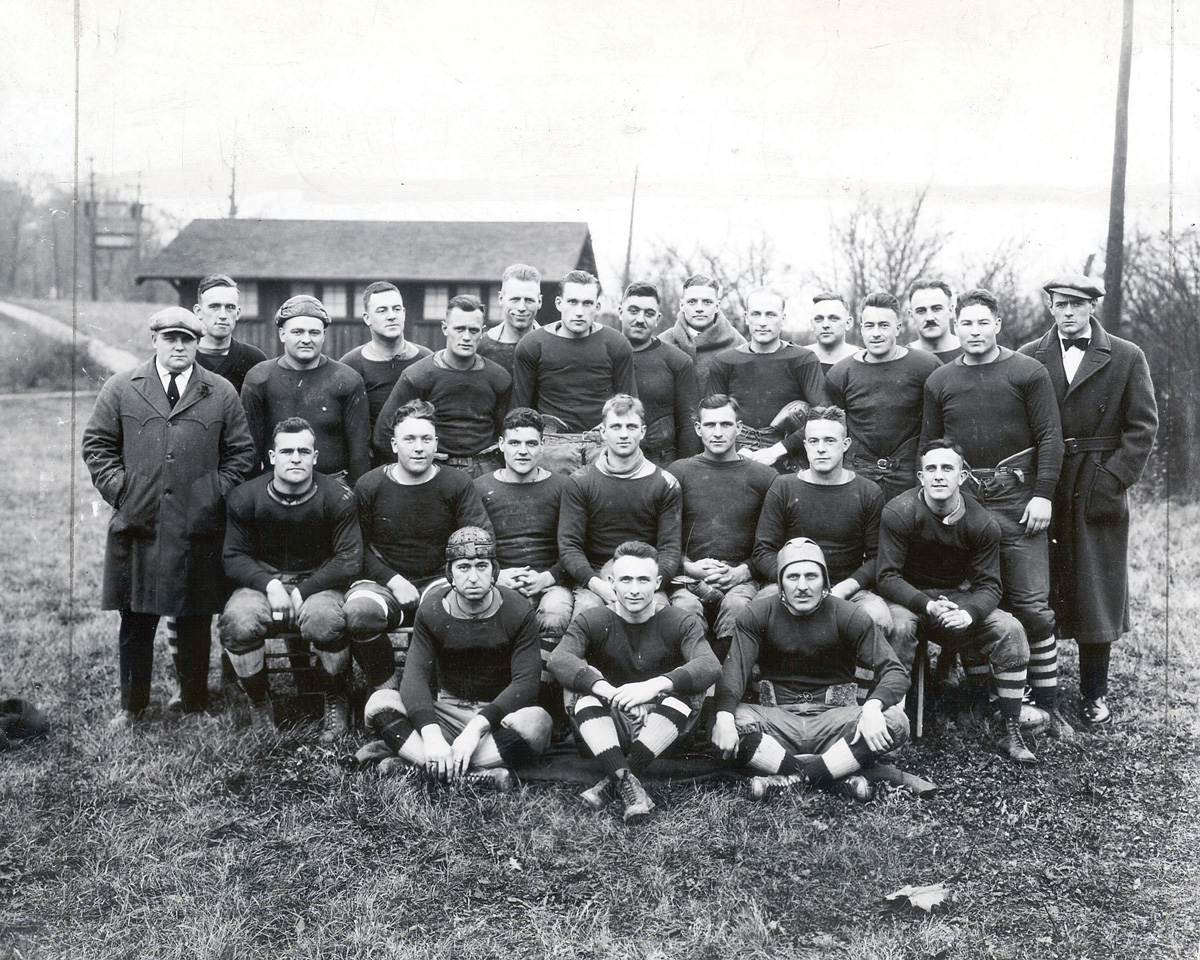NFL had a 'nifty' birth — and it was in Dayton, Ohio
This fall, U.S. professional football celebrates its 100th anniversary. The NFL has its roots firmly in Dayton soil and a scrappy team of blue-collar workers who first formed on campus.
The date: Oct. 3, 1920. The place: Triangle Park in Dayton, where the Stillwater River meets the Great Miami River before its waters rush all the way to the Gulf of Mexico. The teams: the Dayton Triangles and the Columbus Panhandles. The final score was 14-0, a shutout for the home team. The Dayton Daily News reported that 4,000 fans paid the $1.75 admission price to root for their players.
“The old favorites were on the job every minute,” the story reads.
“The spectacular work of Bacon, the usual ground gaining of Partlow, the squirming of Norb Sacksteder, the generalship of Mahrt, the speed and tackling of Fenner, Thiele and Reese, the defense of Kinderdine and the sturdy holding of the various athletes who were in at guard and tackle made the opening play of the season something nifty for the fans to watch.
“But it was more than a victory which tickled the folks, Sunday. The all-around work of the Triangles was excellent.”
“The all-around work of the Triangles was excellent.”
The Dayton Triangles were one of the founding members of the American Professional Football Conference who had met Aug. 20, 1920, in Ralph Hay’s Hupmobile showroom in Canton, Ohio. Franchise fee was $25. Two years later, the organization changed its name to the National Football League. When the NFL looks at its history, it names the Dayton Triangles’ win as the first game played by the league.
Two of the athletes in the historic newspaper recount are men of St. Mary’s, as the University of Dayton was known before 1920.
Alphonse Mahrt was a fair-haired footballer who graduated from the high school level of the institution in 1909 and stayed to study fine arts, graduating with his bachelor’s in 1912. Mahrt, one of the University’s first great athletes, played baseball, basketball and football. The 1912 Exponent, the University’s quarterly publication, wrote of the young quarterback, “He used his splendid judgment in directing his plays and kept his team on the fighting edge throughout.”
Norbert Sacksteder, known as the “fleet-footed” left halfback, also turned heads when on the field. In 1910, he was part of a St. Mary’s team known as the “fast and heavy elevens.” In a 1911 rout of Antioch, the Exponent wrote, “Sacksteder as usual was the best ground gainer and was exceptionally successful in shaking off and dodging tacklers.” He studied business, leaving the University in 1915.
When Mahrt and Sacksteder were in school, St. Mary’s sports teams were the Saints. But the basketball team held particular status, a unique name — the Cadets — and an independent schedule that included a victory in 1913 over the long-winning Buffalo Germans, which led the Cadets to title themselves “World Champions.”
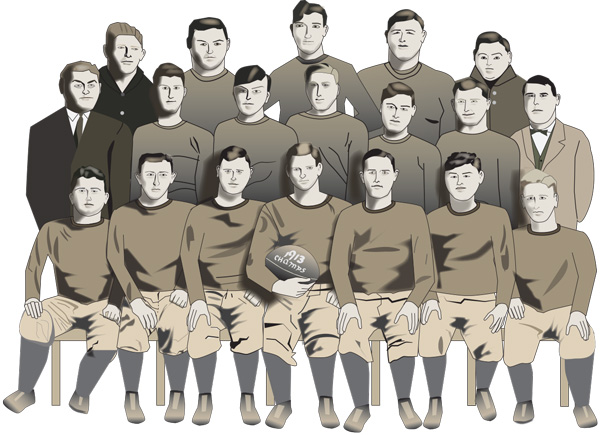 Mahrt and Sacksteder were among the basketball Cadets who in 1912 formed a football team also called the Cadets. The football Cadets, still associated with St. Mary’s, featured alumni, local talent and St. Mary’s men — as young as 11th and 12th graders, writes local journalist Ritter Collett in his book Sports in Dayton: A Bicentennial Retrospective. Mahrt was captain, and players included at least two more St. Mary’s men: Hugh Sacksteder and George “Babe” Zimmerman.
Mahrt and Sacksteder were among the basketball Cadets who in 1912 formed a football team also called the Cadets. The football Cadets, still associated with St. Mary’s, featured alumni, local talent and St. Mary’s men — as young as 11th and 12th graders, writes local journalist Ritter Collett in his book Sports in Dayton: A Bicentennial Retrospective. Mahrt was captain, and players included at least two more St. Mary’s men: Hugh Sacksteder and George “Babe” Zimmerman.
In 1916, the football team took on the moniker Dayton Triangles.
Mahrt was the first captain of the new Dayton Triangles, who drew players from the factories run by Edward Deeds and Charles Kettering. The industrialists bought land along the river for their home team to play, and as Collett surmises, they likely named the team and the park for their three factories. In 1916, the Triangles went 9-1.
Of their inaugural professional season in 1920, Collett writes, “The high point of the 5-2-2 season was a 20-20 tie with [Jim] Thorpe and the Canton Bulldogs at Triangle Park. The legendary Thorpe drop-kicked 45- and 54-yard field goals.”
The Triangles continued to pull from local talent while the rest of the league adapted to hire in big names from college programs. They did nab University of Dayton standout Walter Achiu, a 1927 electrical engineering graduate.
Through the 1920s, many Triangles players still held their day jobs, with the team in later years traveling weekends in a rented Pullman car hitched to the back of a train so they could be home for work Monday mornings. As the years went on, the team was unable to repeat its early successes. In its last two years as a Dayton franchise — 1928 and 1929 — the team won no games.
The role of Cadets and Flyers in those early years of the NFL extend beyond the heralded successes of the Triangles. Their names are written into the history of the first decade of the NFL, to be honored this centennial year.
Blazing the trail
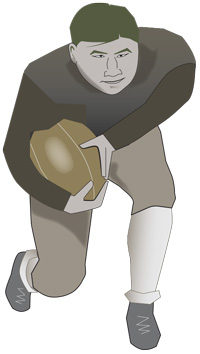 Flyers from the first decade of the NFL
Flyers from the first decade of the NFL
Walter “Sneeze” Achiu ’27 electrical engineering; Dayton Triangles
Bill “Boxcar” Belanich ’27 accounting; Dayton Triangles
Jack R. Brown ’26 high school; Dayton Triangles
Augie Cabrinha ’27 civil engineering; Dayton Triangles
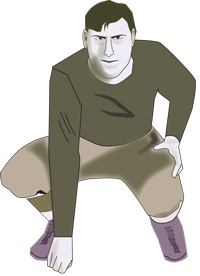 Sam Hipa ’28 civil engineering; Dayton Triangles
Sam Hipa ’28 civil engineering; Dayton Triangles
Alphonse Mahrt ’12 fine arts; ’09 high school; Dayton Triangles
Armin Mahrt, Dayton Triangles, Pottsville Maroons
Johnny Mahrt ’25 business; Dayton Triangles
Lou Mahrt ’26 fine arts, ’22 high school; Dayton Triangles
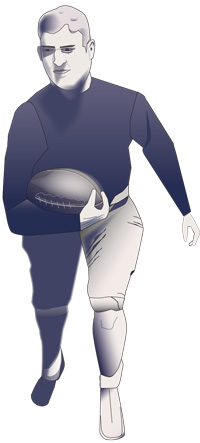 Eugene A. “Gene” Mayl ’20 high school; Dayton Triangles
Eugene A. “Gene” Mayl ’20 high school; Dayton Triangles
Norbert Sacksteder ’15 business; Dayton Triangles, Detroit Tigers, Canton Bulldogs
Jim Spencer ’28 business; Dayton Triangles
Aubrey Strosnider ’27 business, ’22 high school; Dayton Triangles
Gerard “Red” Werder ’12 high school; Buffalo All-Americans, Tonawanda Kardex
Joe C. Windbiel ’17 chemical engineering, ’13 high school; Evansville Crimson Giants
